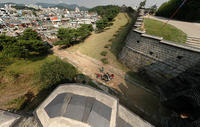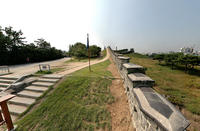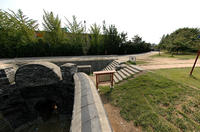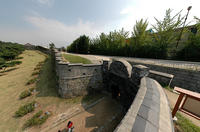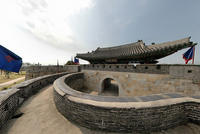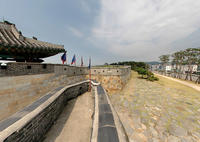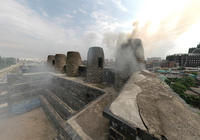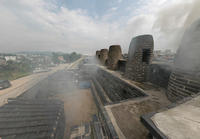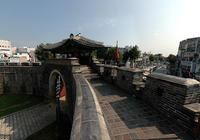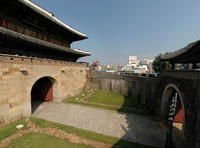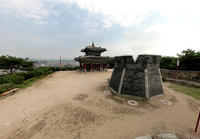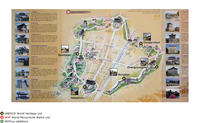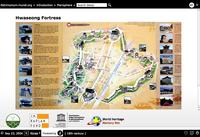You are in: Asia -> Korea, Republic of -> Hwaseong Fortress, and traditional search or Image Gallery will yield results of this site only
Hwaseong Fortress
| Site number: | 817 |
|
| Type of site: | Cultural | |
| Date: | 18th Century | |
| Date of Inscription: | 1997 | |
| Location: | Asia, Republic of Korea, Kyonggi-do Province | |
Up to 75 images are shown here. Click on each for more details or on Image Gallery for more images.
| Description: | At the end of the 18th century the Choson emperor Chongjo relocated his father's tomb to Suwon, where he enclosed it with a strong defensive mechanism, laid out following the guidelines of the period’s leading military architect, who fused the most up-to-date developments of the field from both East and West. Still standing intact are the site’s massive walls that stretch for nearly 6 km; they are punctured by four gates and outfitted with citadels, artillery towers and other features. --WHMNet paraphrase from the description at WHC Site, where additional information is available. For 360 degree imaging of this site, click here. | |
| Hwaseong ("Brilliant Fortress") is located in Suwon, South Korea, 30 kilometers from Seoul. It was built from 1794 to 1796. King Jeongjo constructed the fortress complex to honor and house the remains of his father Prince Sado who was forced to commit suicide by being shut in a rice chest by King Yeongjo. The fortress was designated by UNESCO as a World Heritage site in 1997. Hwaseong Fortress was built over two and a half years, from 1794 to 1796. The architect was Jeong Yak-yong, who would later become a famous leader of the Silhak movement. Silhak, which means practical learning, encouraged the use of science and industry and Jeong incorporated fortress designs from Korea, China, and Japan and scientific knowledge into his plans. Adoption of brick as a building material for the fortress and the use of efficient pulleys and cranes also were the result of the influence of Silhak. --Wikipedia. Text is available under the Creative Commons Attribution-ShareAlike License. For 360 degree imaging of this site, click here. | ||
| Source: | http://whc.unesco.org/en/list/817 | |
| Reference: | 1. UNESCO World Heritage Center, Site Page. | |


